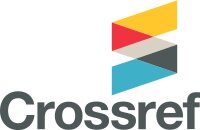Are Implicit Attitudes “Implicit” for their Holders? Testing GATA Construct Validity
DOI:
https://doi.org/10.14515/monitoring.2025.2.2765Keywords:
social measurements, social attitude, construct validity, direct measurements, indirect measurements, explicit attitudes, implicit attitudes, introspection, self-report, GATAAbstract
This article examines the construct validity of the “Graphical Associative Test of Attitudes” (GATA). Presumably, its measurand is implicit attitude or implicit fraction (or implicit component) of holistic attitude, which depends on a theoretical conceptualization. A commonly accepted characteristic of implicit phenomena of the mind is their inaccessibility, or at least difficulty, to introspection. Some later studies have claimed that respondents are able to predict their results on the Implicit Associations Test, which in this case means that implicit content is accessible. Leaving aside the discussion about the degree of accessibility of implicit phenomena, we used the general theoretical assumption and operational design of some of our colleagues to test the construct validity of our own “indirect” measurement method. Would our respondents be able to predict their personal scores on GATA? The results of the experiment have shown — no, they would not. The respondents' predictions could be explained far more reliably by their explicit attitudes and by their expectations about the attitudes of the social environment. Thus, we have not found any refutation of the initial assumption that the GATA measurand is an implicit fraction of attitudes. This allows us to focus our further research on the problem of the accuracy of the GATA measure.
References
Chen M., Bargh J. (1999) Consequences of Automatic Evaluation: Immediate Behavioral Predispositions to Approach or Avoid the Stimulus. Personality and Social Psychology Bulletin. Vol. 25. No. 2. P. 215─224. https://doi.org/10.1177/0146167299025002007.
Chernozub O. (2022a) The Two-Component Model of Behavior Factors: Evidences of Orthogonality of Explicit and Implicit factors. RUDN Journal of Sociology. Vol. 22 No. 1. P. 70─83. https://doi.org/10.22363/2313-2272-2022-22-1-70-83.
Chernozub O. (2022b) Theory of (Un)Planned Behavior? How our Behavioral Predictions Suffer from “Unplanned” Actions. The Russian Sociological Review. Vol. 21. No. 4. P. 82─105. https://doi.org/10.17323/1728-192x-2022-4-82-105.
Chernozub O. (2023) Graphic Associative Test of Attitudes as a Convenient Implicit Measurement Tool for Mass Polls. RUDN Journal of Sociology. Vol. 23. No. 1. P. 122─141. https://doi.org/10.22363/2313-2272-2023-23-1-122-141.
Chernozub O. (2024) Do Data on Implicit Attitudes Improve Predictions? Evaluating the Criterion Validity of the GATA. RUDN Journal of Sociology. Vol. 24 No. 4. P. 241─256. https://doi.org/10.22363/2313-2272-2024-24-1-241-258.
Chernozub O. L., Shuraeva L. Y. (2023) Orthogonality of IAT and GATA Results: The Worse, the Better? Monitoring of Public Opinion: Economic and Social Changes. No. 6. P. 132─151. https://doi.org/10.14515/monitoring.2023.6.2478. (In Russ.)
Чернозуб О.Л., Шураева Л.Ю. Ортогональность результатов IAT и ГАТО: чем хуже, тем лучше? // Мониторинг общественного мнения: экономические и социальные перемены. 2023. № 6. С. 218—237. https://doi.org/10.14515/monitoring.2023.6.2478.
Chernozub O. L. (2023) GATA: Test ─ Retest Reliability of Measurement Outcomes. Sociology: Methodology, Methods, Mathematical Modeling. No. 57. P. 112─137. https://doi.org/10.19181/4m.2023.32.2.4.
Dancey C., Reidy J. (2020) Statistics Without Maths for Psychology. London: Pearson.
De Houwer J., Moors A. (2007) How to Define and Examine the Implicitness of Implicit measures. In: Wittenbrink B., Schwartz N. (ed.) Implicit Measures of Attitudes: Procedures and Controversies. New York, NY: Guilford Press. P. 179─194.
De Vaus D. (2002) Surveys in Social Research. London: Routledge.
Evans J. (2008) Dual-Processing Accounts of Reasoning, Judgment, and Social Cognition. Annual Review of Psychology. No. 59. P. 255─278.
Fazio R. (1990) The Role of Attitudes in Memory-Based Decision Making. Journal of Personality and Social Psychology. Vol. 59. No. 4. P. 614─22. https://doi.org/10.1037/0022-3514.59.4.614.
Fazio R. (2007) Attitudes as Object-Evaluation Associations of Varying Strength. Social Cognition. Vol. 25. No. 5. P. 603─637. https://doi.org/10.1521/soco.2007.25.5.603.
Gawronski B., Bodenhausen G. V. (2006) Associative and Propositional Processes in Evaluation: An Integrative Review of Implicit and Explicit Attitude Change. Psychological Bulletin. Vol. 132. No. 5. P. 692─731. https://doi.org/10.1037/0033-2909.132.5.692.
Gawronski B., Bodenhausen, G. V. (2011) The Associative-Propositional Evaluation Model: Theory, Evidence, and Open Questions. Advances in Experimental Social Psychology. Vol. 44. P. 59–127. https://doi.org/10.1016/B978-0-12-385522-0.00002-0.
Gawronski B., LeBel E. P. (2008) Understanding Patterns of Attitude Change: When Implicit Measures Show Change, but Explicit Measures Do Not. Journal of Experimental Social Psychology. Vol. 44. No. 5. P. 1355─1361. https://doi.org/10.1016/j.jesp.2008.04.005.
Gawronski B., Hahn A. (2019) Implicit Measures: Procedures, Use, and Interpretation. In: Blanton H., LaCroix J. M., Webster G. D. (eds.) Measurement in Social Psychology. New York, NY: Routledge P. 29─55. https://doi.org/10.4324/9780429452925-2.
Gilovich T., Griffin D. (2002) Introduction — Heuristics and Biases: Then and Now. In: Gilovich T., Griffin D., Kahneman D. (eds.) Heuristic and Biases: The Psychology of Intuitive Judgment. New York, NY: Cambridge University Press. P. 1─18.
Goedderz A., Hahn A. (2024) Awareness and Calibration: The Role of Descriptive Norms and Social Desirability in Accurate IAT Score Predictions of Food Items vs. Social Groups. Personality and Social Psychology Bulletin. https://doi.org/10.1177/01461672241254447.
Greenwald A., Smith C., Sriram N., Bar-Anan Y., Nosek B. (2009) Implicit Race Attitudes Predicted Vote in the 2008 U.S. Presidential Election. Analyses of Social Issues and Public Policy. Vol .9. No. 1. P. 241─253. https://doi.org/10.1111/j.1530-2415.2009.01195.x.
Greenwald A. G., Banaji M. R. (2017) The Implicit Revolution: Reconceiving the Relation Between Conscious and Unconsciousness. American Psychologist. Vol. 72. P. 861─871.
Greenwald A., Brendl M., Cai H. et al. (2021) Best Research Practices for Using the Implicit Association Test. Behavior Research Methods. Vol. 54. P. 1161─1180. https://doi.org/10.3758/s13428-021-01624-3.
Hahn A., Judd C. M., Hirsh H. K., Blair I. V. (2014) Awareness of Implicit Attitudes. Journal of Experimental Psychology: General. Vol. 143. No. 3. P. 1369─1392. https://doi.org/10.1037/a0035028.
Kahneman D., Frederick S. (2002) Representativeness Revisited: Attribute Substitution in Intuitive Judgment. In: Gilovich T., Griffin D., Kahneman D. (eds.) Heuristic and Biases: The Psychology of Intuitive Judgment. New York, NY: Cambridge University Press. P. 49─81.
Kahneman D. (2011) Thinking, Fast and Slow. New York, NY: Farrar, Straus and Giroux.
Katz D. (1960) The Functional Approach to the Study of Attitudes. Public Opinion Quarterly. Vol. 24. No. 2. P. 163─204. https://doi.org/10.1086/266945.
Kruskal W. (1958) Ordinal Measures of Association. Journal of the American Statistical Association. Vol. 53. No. 284. P. 814─861. https://doi.org/10.1080/01621459.1958.10501481.
Lai C. K., Hoffman K. M., Nosek B. A. (2013) Reducing Implicit Prejudice. Social and Personality Psychology Compass. Vol. 7. No. 5. P. 315─330. https://doi.org/10.1111/spc3.12023.
Likert R. (1932) Technique for the Measurement of Attitudes. Archives of Psychology. Vol. 22. No. 140. P. 5─55. URL: https://legacy.voteview.com/pdf/Likert_1932.pdf (accessed: 23.04.2025).
Machery E. (2021) Anomalies in Implicit Attitudes Research. Wiley Interdisciplinary Reviews: Cognitive Science. Vol. 13. No. 1. Art. e1569. https://doi.org/10.1002/wcs.1569.
Machery E. (2022) Anomalies in Implicit Attitudes Research: not so Easily Dismissed. Wiley Interdisciplinary Reviews: Cognitive Science. Vol. 13. No. 3. Art. e1591. https://doi.org/10.1002/wcs.1591.
McConnell A. R., Dunn E. W., Austin S. N., Rawn C. D. (2011) Blind Spots in the Search for Happiness: Implicit Attitudes and Nonverbal Leakage Predict Affective Forecasting Errors. Journal of Experimental Social Psychology. Vol. 47. No. 3. P. 628─634. https://doi.org/10.1016/j.jesp.2010.12.018.
Metcalfe J., Mischel W. (1999) A Hot/Cool-System Analysis of Delay of Gratification: Dynamics of Willpower. Psychological Review. Vol. 106. No. 1. P. 3─19. https://doi.org/10.1037/0033-295X.106.1.3.
Mitchell G., Tetlock P. (2017) Popularity as a Poor Proxy for Utility: The Case of Implicit Prejudice. In: Lilienfeld S., Waldman I. (eds.) Psychological Science under Scrutiny: Recent Challenges and Proposed Solutions. New York, NY: Wiley. P. 164─195.
Morris A., Kurdi B. (2022) Awareness of Implicit Attitudes: Large-Scale Investigations of Mechanism and Scope. PsyArXiv Preprints. https://doi.org/10.31234/osf.io/dmjfq.
Nosek B. A. (2005) Moderators of the Relationship Between Implicit and Explicit Evaluation. Journal of Experimental Psychology: General. Vol. 134. No. 4. P. 565─584. https://doi.org/10.1037/0096-3445.134.4.565.
Perugini M. (2005) Predictive Models of Implicit and Explicit Attitudes. British Journal of Social Psychology. Vol. 44. No. 1. P. 29─45. https://doi.org/10.1348/014466604X23491.
Perugini M., Richetin J., Zogmaister C. (2010) Prediction of Behavior. In: Gawronski B., Payne B. (eds.) Handbook of Implicit Social Cognition: Measurement, Theory, and Applications. New York, NY: Guilford Press. P. 255─277.
Rahmani Azad Z., Goedderz A., Hahn A. (2022) Self-Awareness and Stereotypes: Accurate Prediction of Implicit Gender Stereotyping. Personality and Social Psychology Bulletin. Vol. 49. No. 12. P. 1695─1708. https://doi.org/10.1177/01461672221120703.
Roccato M., Zogmaister C. (2010) Predicting the Vote Through Implicit and Explicit attitudes: A Field Research. Political Psychology. Vol. 31. No. 2. P. 249─274. https://doi.org/10.1111/j.1467-9221.2009.00751.x.
Rosenberg M. J. (1956) Cognitive Structure and Attitudinal Affect. The Journal of Abnormal and Social Psychology. Vol. 53. No. 3. P. 367—372. https://doi.org/10.1037/h0044579.
Rosenberg M. J., Hovland C. I., McGuire W. J., Abelson R. P., Brehm J. W. (1960) Attitude Organization and Change: An Analysis of Consistency Among Attitude Components. Oxford: Yale University Press.
Smith M., Bruner J., White R. (1956) Opinions and Personality. New York, NY: John Wiley & Sons.
Strack F., Deutsch R. (2004) Reflective and Impulsive Determinants of Social Behavior. Personality and Social Psychology Review. Vol. 8. No. 3. P. 220—247. https://doi.org/10.1207/s15327957pspr0803_1.
Strack F., Neumann R. (2000) Furrowing the Brow May Undermine Perceived Fame: The Role of Facial Feedback in Judgments of Celebrity. Personality and Social Psychology Bulletin. Vol. 26. No. 7. P. 762—768. https://doi.org/10.1177/0146167200269002.
Downloads
Published
How to Cite
Issue
Section
License
Copyright (c) 2025 Monitoring of Public Opinion: Economic and Social Changes

This work is licensed under a Creative Commons Attribution-NonCommercial-ShareAlike 4.0 International License.






